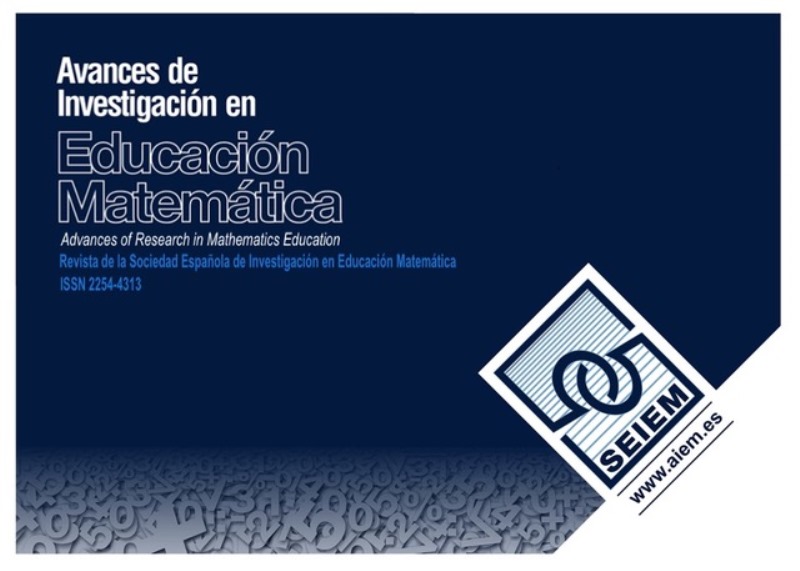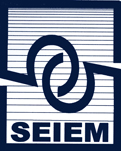Conectando resolución y formulación de problemas: Estudiantes de tercer grado aprendiendo a plantear problemas en Geometría y Medición
DOI:
https://doi.org/10.35763/aiem28.7553Palabras clave:
Formulación de problemas, Resolución de problemas, Geometría y Medición, Educación Primaria, Enseñanza de MatemáticasResumen
Este estudio explora la relación entre resolución de problemas (RP) y formulación de problemas (FP) en educación matemática, con énfasis en la capacidad de estudiantes de tercer grado para crear problemas en Geometría y Medición. Se adoptó un marco teórico que considera la complejidad matemática y lingüística para analizar la evolución de los problemas formulados. También se compararon problemas resueltos y formulados para comprender mejor la conexión entre RP y FP. El estudio, realizado en ocho clases con tareas alineadas al currículo, combinó actividades de RP y FP. Se analizaron cualitativamente los trabajos escritos del alumnado. Los resultados muestran avances significativos en FP: mejor uso del lenguaje matemático, mayor claridad expresiva, adecuación a las consignas y resolubilidad de los problemas. El estudio resalta el valor del diseño de tareas y la articulación RP-FP para potenciar competencias matemáticas, ofreciendo una vía para integrar la FP como objetivo de aprendizaje en primaria.
Descargas
Citas
Barabé, G., & Proulx, J. (2015). Problem posing: A review of sorts. In T. Bartel, K. Bieda, R. Putnam, K. Bradfield, & H. Dominguez (Eds.), Proceedings of the 37th North American PME (pp. 1277–1284). Michigan State University.
Brown, S. I., & Walter, I. M. (2005). The art of problem posing (3rd ed.). Lawrence Erlbaum Associates. https://doi.org/10.4324/9781410611833
Cai, J., Moyer, J., Wang, N., Hwang, S., Nie, B., & Garber, T. (2013). Mathematical problem posing as a measure of curricular effect on students’ learning. Educational Studies in Mathematics, 83(1), 57–69. https://doi.org/10.1007/s10649-012-9429-3
Cai, J., & Rott, B. (2024). On understanding mathematical problem-posing processes. ZDM – Mathematics Education, 56, 61–71.
https://doi.org/10.1007/s11858-023-01536-w
Canavarro, A. P., Mestre, C., Gomes, D., Santos, E., Santos, L., Brunheira, L., Vicente, M., Gouveia, M. J., Correia, P., Marques, P., & Espadeiro, G. (2021). Aprendizagens essenciais de matemática no ensino básico. ME-DGE.
Carrillo, J., & Cruz, J. (2016). Problem-posing and questioning: Two tools to help solve problems. In P. Felmer, E. Pehkonen, & J. Kilpatrick (Eds.), Posing and solving mathematical problems: Advances and new perspectives (pp. 23–36). Springer. https://doi.org/10.1007/978-3-319-28023-3_2
Gravemeijer, K., & Cobb, P. (2006). Design research from a learning design perspective. In J. van den Akker, K. Gravemeijer, S. McKenney, & N. Nieveen (Eds.), Educational design research (pp. 45–85). Routledge.
Hiebert, J., Carpenter, T. P., Fennema, E., Fuson, K., Human, P., Murray, H., & Wearne, D. (1996). Problem solving as a basis for reform in curriculum and instruction: The case of mathematics. Educational researcher, 25(4), 12–21. https://doi.org/10.3102/0013189X025004012
Jacinto, H., & Carreira, S. (2017). Diferentes modos de utilização do GeoGebra na resolução de problemas de matemática para além da sala de aula: Evidências de fluência tecno-matemática. Bolema: Boletim de Educação Matemática, 31, 266–288. https://doi.org/10.1590/1980-4415v31n57a13
Leavy, A., & Hourigan, M. (2024). Attending to task variables when engaging in group problem posing for elementary level mathematics. The Journal of Mathematical Behavior, 73, 101128. https://doi.org/10.1016/j.jmathb.2024.101128
Özgen, K., Aydin, M., Geçici, M., & Bayram, B. (2017). Investigation of problem posing skills of eighth grade students in terms of some variables. Turkish Journal of Computer and Mathematics Education, 8(2), 323–351. https://doi.org/10.16949/turkbilmat.322660
Palmér, H., & van Bommel, J. (2020). Young students posing problem-solving tasks: What does posing a similar task imply to students? ZDM – Mathematics Education, 52(4), 743–752. https://doi.org/10.1007/s11858-020-01129-x
Papadopoulos, I., & Patsiala, N. (2020). Capturing problem posing landscape in a grade-4 classroom: A pilot study. In U. T. Jankvist, M. van den Heuvel-Panhuizen, & M. Veldhuis (Eds.), Proceedings of the 11th Congress of the European Society for Research in Mathematics Education (pp. 4431–4438). Freudenthal Group & Freudenthal Institute, Utrecht University, & ERME.
Papadopoulos, I., & Patsiala, N. (2023). Problem-posing training and its impact on the quality of the posed problems. In P. Drijvers, C. Csapodi, H. Pálmer, K. Gosztonyi, & E. Kóny (Eds.), Proceedings of the 13th Congress of the European Society for Research in Mathematics Education (pp. 457–464). Alfréd Rényi Institute of Mathematics, & ERME.
Posamentier, A. S., & Krulik, S. (2009). Problem solving in mathematics. Corwin Press.
Radmehr, F., & Vos, P. (2020). Issues and challenges of 21st century assessment in mathematics education. In L. Leite, E. Oldham, A. S. Afonso, F. Viseu, L. Dourado, & M. H. Martinho (Eds.), Science and mathematics education for 21st century citizens: Challenges and ways forward (pp. 437–462). Nova Science Publishers.
Sadak, M., Incikabi, L., Ulusoy, F., & Pektas, M. (2022). Investigating mathematical creativity through the connection between creative abilities in problem posing and problem solving. Thinking Skills and Creativity, 45, 101108. https://doi.org/10.1016/j.tsc.2022.101108
Silver, E. A. (1995). The nature and use of open problems in mathematics education: Mathematical and pedagogical perspectives. International Reviews on Mathematical Education, 27, 67–72.
Silver, E. A., & Cai, J. (1996). An analysis of arithmetic problem posing by middle school students. Journal for Research in Mathematics Education, 27(5), 521–539. https://doi.org/10.2307/749846
Descargas
Publicado
Cómo citar
Número
Sección
Licencia
Derechos de autor 2025 Hugo Fernandes, Hélia Jacinto, Hélia Oliveira

Esta obra está bajo una licencia internacional Creative Commons Atribución 4.0.
Los trabajos se publican bajo una licencia de Creative Commons: Reconocimiento 4.0 España a partir del número 21 (2022).
Los autores que publican en esta revista están de acuerdo con los siguientes términos:
- Los autores conservan los derechos de autor y el reconocimiento de la autoría.
- Los textos publicados en esta revista están sujetos –si no se indica lo contrario– a una licencia de Reconocimiento 4.0 Internacional de Creative Commons. Puede copiarlos, distribuirlos, comunicarlos públicamente, hacer obras derivadas y usos comerciales siempre que reconozca los créditos de las obras (autoría, nombre de la revista, institución editora) de la manera especificada por los autores o por la revista. La licencia completa se puede consultar en http://creativecommons.org/licenses/by/4.0.
- Los autores pueden establecer por separado acuerdos adicionales para la distribución no exclusiva de la versión de la obra publicada en la revista (por ejemplo, situarlo en un repositorio institucional o publicarlo en un libro), con un reconocimiento de su publicación inicial en esta revista.
- Se permite y se anima a los autores a difundir sus trabajos electrónicamente (por ejemplo, en repositorios institucionales o en su propio sitio web) antes y durante el proceso de envío, ya que puede dar lugar a intercambios productivos, así como a una citación más temprana y mayor de los trabajos publicados (Véase The Effect of Open Access) (en inglés).









